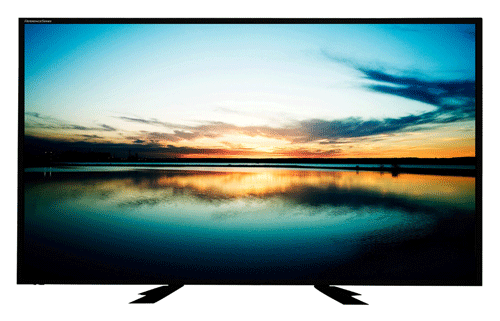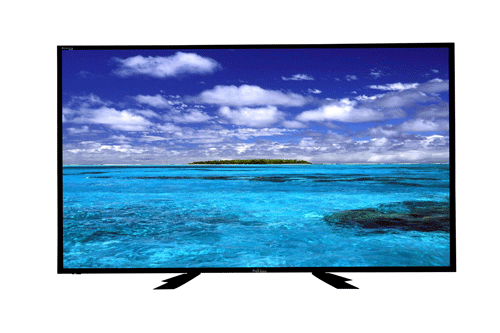INTERVIEW: JVC’s Craig Yanagi on 4K Monitoring
WAYNE, N.J. ―When 4K started gaining traction as a production format a couple years ago, 4K monitors were scarce and expensive, but prices are declining and availability is rising… rapidly.

JVC's ProVérité RS-840UD Reference Series 4K 84-inch LCD monitor
With prices down and image quality up, 4K monitors are increasingly reaching into video operations of all kinds, including broadcasters and program providers. Broadcast Engineering Extra spoke to Craig Yanagi, manager of marketing and brand strategy for JVC Professional Products about the future of 4K monitors in broadcasting and related video operations. Craig is responsible for JVC’s 4KCAM, ProHD, 4K and HD monitors and displays, as well as Blu-Ray/HDD combination deck professional product lines.
BE: Who’s buying 4K monitors today? Is there interest from broadcasters?
Yanagi: First, I think it’s important to note that JVC sells a lot more HD monitors than 4K monitors, and I think that’s going to be the case for a long time. Yes, interest in 4K is continuing to grow, but we still don’t even have a U.S. broadcast standard in place [for 4K]. HD is going to remain the production standard for local news for some time to come.
That said, 4K displays are being purchased for critical image analysis by customers in a number of vertical markets. We’ve made sales to the satellite industry, as well as media outlets, government installations and production companies. In our industry, post-production houses, master control operations and sports broadcasters have expressed interest in 4K monitoring.

Craig Yanagi, manager of marketing and brand strategy for JVC Professional Products
BE: Where are broadcasters using 4K displays? For control room monitoring with multiviewers?
Yanagi: 4K is ideal for critical image viewing, so engineers can verify the quality of a signal that is being broadcast to viewers. It’s also a great choice for master control or production control room, because it can be used as a multi-view monitor and deliver four full HD images on one screen.
Last year, we partnered with RGB Spectrum to jointly develop an affordable “Ultra HD” real-time multiviewer system for command and control centers and other high-end applications. It pairs our PS-840UD Professional Series ProVérité 4K 84-inch LCD monitor with RGB Spectrum’s SuperView 4K Multiviewer. It’s a smart solution for master control or even a mobile sports production vehicle. Our PS-840UD stands out in the market because it offers 60p output, where most 4K monitors only offer 30p.
BE:There has been lots of discussion about shooting in 4K to “future-proof” the content. What does this mean for monitors? Is this something that call-letter broadcasters do, or is it more at the Hollywood studio level?
Yanagi: As more and more productions are shot in 4K, the demand grows for monitors that can reproduce and accurately display the increased dynamic range from these works. Today, this is predominantly critical to digital cinema, high-end post production, and archiving. Call letter productions will also require the ability to evaluate their works in 4K as their content grows in the future to reach the broadening small-screen marketplace (i.e. watching YouTube 4K on iPads with Retina Display).
BE:Will we soon be at a point where the cost difference between an HD display and a 4K display will be so small that there won’t be any reason to buy HD? When might we get to that point?
Yanagi: Economies of scale will inevitably bring down the pricing of 4K displays at a faster pace than HD television, with an even larger number of companies providing competitive products in comparison to when HD television was first brought into the marketplace. Consumer HD set prices are remarkably low today, and there are already consumer 4K monitors priced well under $1,000. While HD sets in general are not going away any time soon, high-end HD sets could be replaced by 4K models in the very near future.

JVC's ProVérité RS-840UD Reference Series 4K 84-inch LCD monitor
BE:What’s the most important reason why a broadcaster should get a 4K monitor?
Yanagi:The reason for broadcasters to have a 4K monitor is to view content at its optimum quality, which is the sole purpose of a station’s “god” monitor. Only a few units are purchased for this task by stations today, whereas more economical models are used throughout the station mainly for two reasons: economy and relevance to the viewing audience. Moving forward, as signal distribution become more robust in the marketplace, the necessity for viewing the higher resolution content will create the demand for 4K monitoring.
The professional video industry's #1 source for news, trends and product and tech information. Sign up below.
Bob Kovacs is the former Technology Editor for TV Tech and editor of Government Video. He is a long-time video engineer and writer, who now works as a video producer for a government agency. In 2020, Kovacs won several awards as the editor and co-producer of the short film "Rendezvous."

